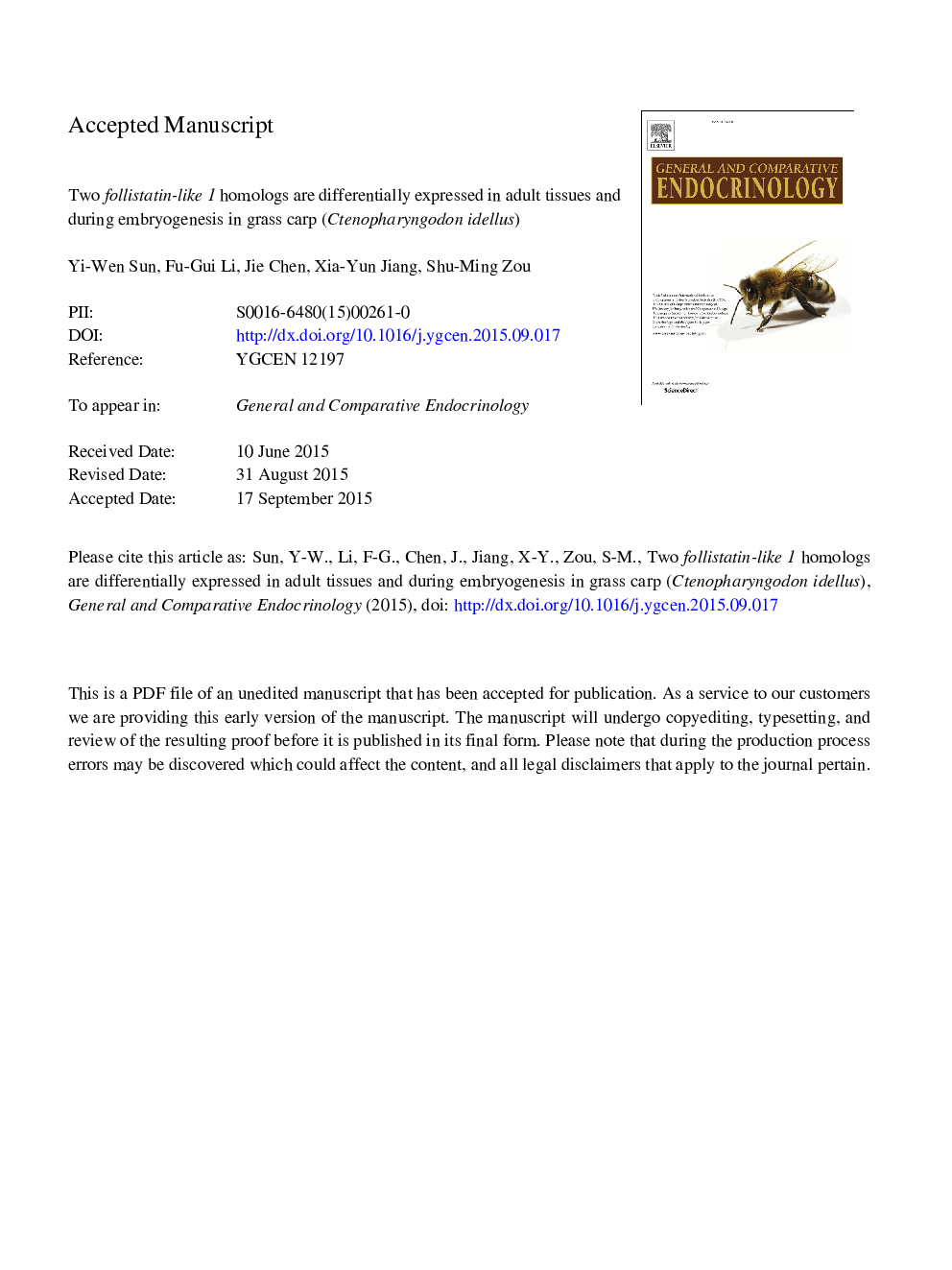| Article ID | Journal | Published Year | Pages | File Type |
|---|---|---|---|---|
| 5900942 | General and Comparative Endocrinology | 2015 | 37 Pages |
Abstract
Follistatin-like 1 (Fstl1) peptides play important roles in inhibiting myoblast proliferation and differentiation. Here, we characterized and examined the expression patterns of fstl1a and -b in grass carp (Ctenopharyngodon idellus). These genes encode 314 aa and 310 aa peptides, respectively, sharing a sequence identity of 83%. Except for the existence of the follistatin-N-terminal (FOLN) and Kazal-type 2 serine protease inhibitor (Kazal 2) domains, grass carp Fstl1a and -b do not share amino acid sequence similarity with Fst1 and -b. Both fstl1a and -b mRNAs were widely expressed in adult tissues. During embryogenesis, grass carp fstl1a and -b mRNA was detected in the presomitic mesoderm and somites at 12 h post fertilization (hpf). At 24 hpf, fstl1a mRNA was expressed in the hindbrain, somites, notochord and tailbud, while fstl1b mRNA was only detected in the tailbud. At 36 hpf, fstl1a mRNA was detected in the hindbrain and notochord, and fstl1b was also expressed in the notochord. Furthermore, fstl1a and -b were downregulated in brain and liver tissue following injection with 10 or 50 μg hGH, while fstl1b was significantly up-regulated in muscle tissue after 10 μg hGH treatment. Both fstl1a and -b were significantly up-regulated at 2, 4 or 6 days of nutrient restriction, and fstl1a was still highly expressed in the liver and muscle after 3 days of refeeding, as was fstl1b in the brain and muscle. The expression of these genes returned to near control levels following 6 days of refeeding. Our findings suggest that the two fstls play important but divergent roles in embryonic development and tissue growth regulation in grass carp.
Related Topics
Life Sciences
Biochemistry, Genetics and Molecular Biology
Endocrinology
Authors
Yi-Wen Sun, Fu-Gui Li, Jie Chen, Xia-Yun Jiang, Shu-Ming Zou,
